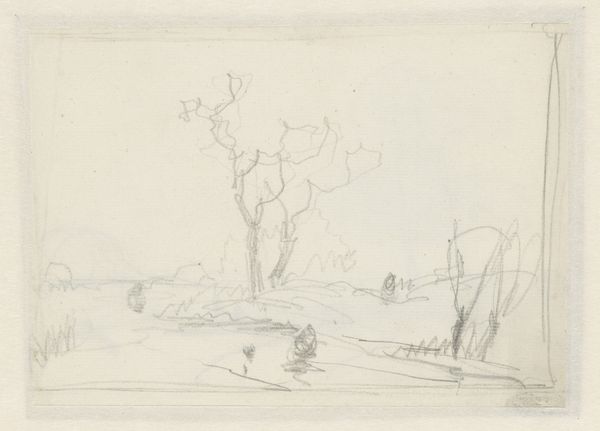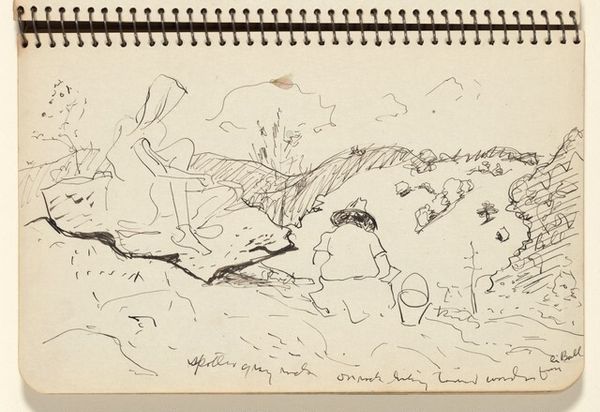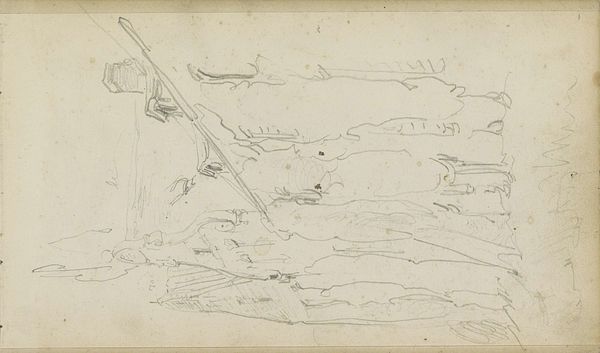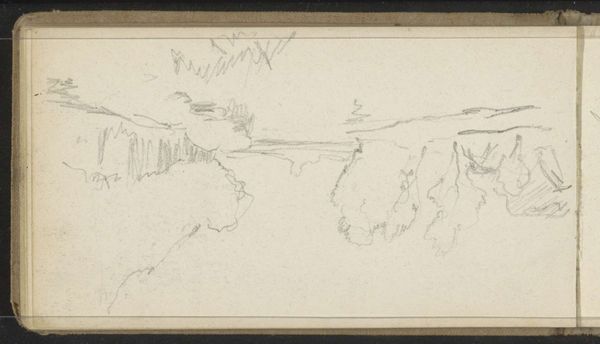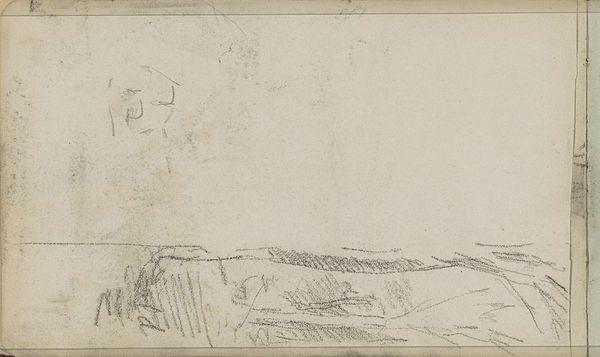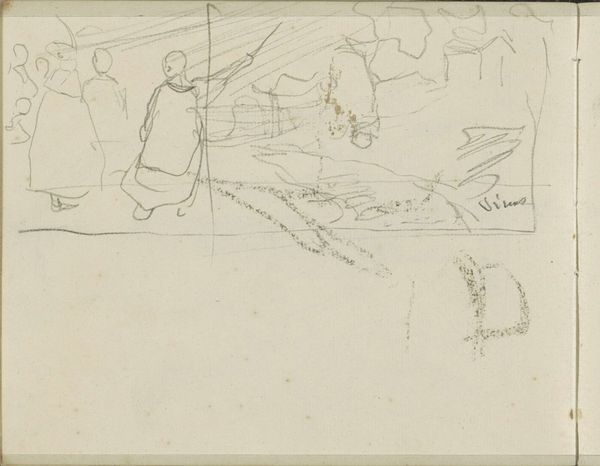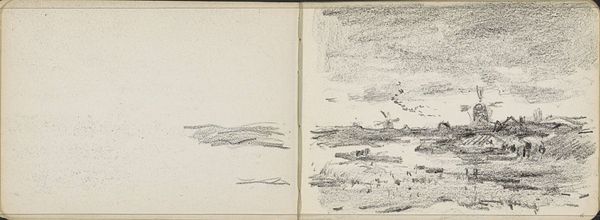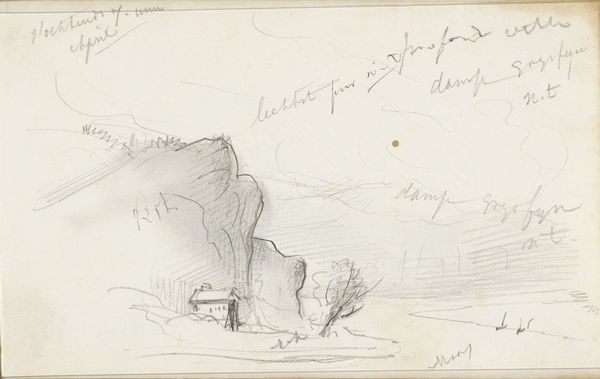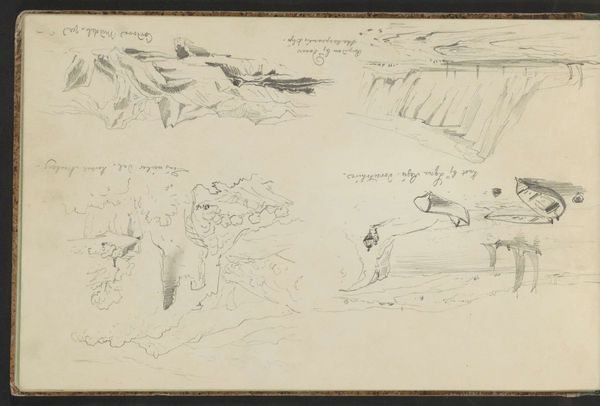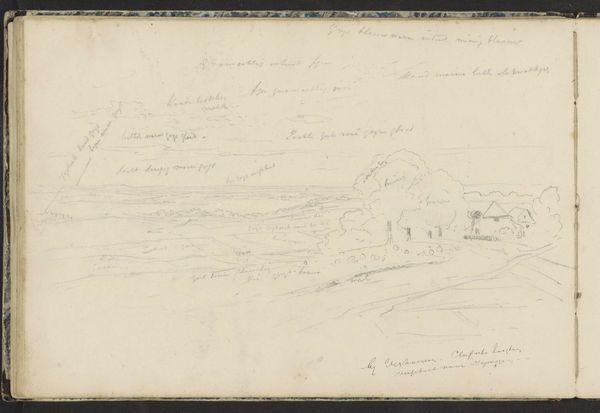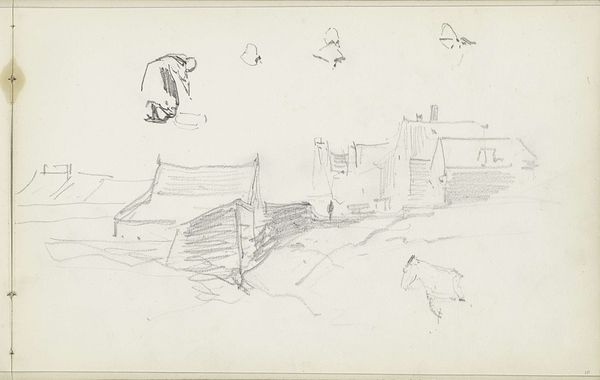
Studieblad met een scheepswrak, poolhazen, een ijsbeer en stenen bouwwerken 1880 - 1886
0:00
0:00
drawing, pencil
#
drawing
#
landscape
#
figuration
#
pencil
#
watercolor
Copyright: Rijks Museum: Open Domain
Curator: Before us is "Studieblad met een scheepswrak, poolhazen, een ijsbeer en stenen bouwwerken," a pencil drawing by Louis Apol, created between 1880 and 1886. What strikes you first about this seemingly fragmented study? Editor: Well, I immediately notice the rawness of it, the almost urgent quality of the marks. It’s a sketch, a set of impressions, nothing polished or perfected, it feels immediate, like stepping into the artist’s workspace. Curator: I agree. These symbols – the shipwreck, the arctic hare, even the distant suggestion of built structures – speak to the vulnerability of human endeavors against the harsh grandeur of the Arctic. The sketchbook feel reminds me that these studies are also documents of colonial era arctic expeditions. Editor: Colonial era Arctic expeditions… Interesting. Knowing Apol, I wouldn’t be surprised if this was produced based on descriptions, secondary material. It reads less like an "on the ground" experience, more like constructed imagery drawing from published accounts. But where does this drawing fit within Apol's production methods? Did he revisit and incorporate these sketched motifs in larger canvases? Curator: Yes, certainly. Consider the bear, placed almost playfully apart. Bears function symbolically as stand-ins for untamed power and also as reminders of natural processes independent of human control. I can trace this figure in his more formal landscape painting with almost no change. Editor: But what’s being processed, the literal environment or rather this constructed perception of that remote place? This process allows the extraction and relocation of those signs in the landscape, making them suitable for new compositions as standardized parts in a new manufacturing system. I wonder if the flatness of the paper itself reinforces a sense of that remove from any lived or experiential landscape. Curator: It underscores a transformation of direct experience, that is evident, and highlights how memory and cultural ideas reshape perceptions of place. There is something intrinsically poignant about it, given our current awareness of the ecological impact we are having on these regions. Editor: So, while initially striking me as simple, the more I contemplate the materials, the artistic processing, I see this drawing actually brings up more complex questions about our relationship to not just making art, but in making meaning itself through what we choose to extract and transform through images. Curator: Exactly. What begins as seemingly direct studies can evolve into compelling reflections on our collective understanding of a remote place, highlighting our fragile hold on the narrative of that territory.
Comments
No comments
Be the first to comment and join the conversation on the ultimate creative platform.
